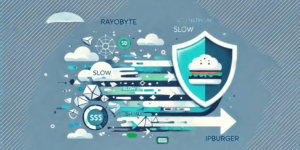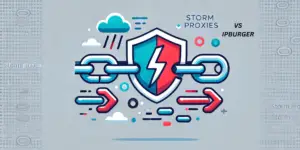The internet has lots of threats in its Pandora box ranging from malware and identity theft to blackmail and other breaches. One of the most common threats in most networks is the Denial of Service (DoS) attacks. As the name suggests, DoS attacks do the same thing, make resources inaccessible to legitimate users. While at it, malicious actors can propagate further attacks by injecting malware into various systems. Like other many cyber-attacks, DoS attacks usually focus on big giant companies. But with the ‘bring your own device’ rule in most companies, you won’t know when you will fall into their snare. In this case, you will also be the victim.
Over the past, DoS attacks have evolved to Distributed DoS attacks which are more complex and sophisticated to identify.
Denial of service attacks in a nutshell
Besides making resources unavailable to users, DoS attacks usually result in system crashes and slowdowns. If crashing doesn’t happen, DoS attacks flood the services (making them slow down). Crash attacks occur when malicious criminals use bugs to exploit vulnerabilities in a system. Eventually, the system will be overwhelmed, and it will crash. This type of DoS attacks is less common.
The major common type of DoS attacks are the flooding attacks. Flooding attacks occur when malicious actors overwhelm a particular system with large amounts of traffic that the system isn’t able to handle. The system eventually slows down or crashes. Flooding DoS attacks include Ping flood and Ping of Death. These attacks take advantage of the Internet Control Message Protocol (ICMP).
Ping flood attack
This type of DoS attack occurs when a malicious actor overwhelms the target system with packets of information. At times, they can be malicious and take advantage of vulnerabilities in misconfigured devices.
How it works
- In this attack, the malicious actor sends lots of ping packets as fast as possible without waiting for the victim system to reply (flooding).
- For this attack to be executed successfully, the malicious actor should have more bandwidth than the victim. When the victim’s system starts to respond to the packets, it will take as much as twice the bandwidth the attacker used to send the packets.
- The slower the bandwidth, the more the chances of success as the system will significantly slow down trying to respond to the flooded packets.
Ping of Death (PoD)
If flooding doesn’t work, an attacker may choose to use the PoD attack. In PoD, the malicious actor sends an oversized ping command with malicious packets.
How it works
- Most systems rely on the Internet protocol to communicate over the internet. This protocol usually doesn’t allow packets larger than 65,535 bytes. In these attacks, a malicious actor sends packets larger than the maximum size, and the systems can’t deal with them. As a result, they crash and services are disrupted.
- Malicious actors usually send the larger malformed packets in fragments in their transmission. The receiving system will then start to assemble them, but they will become too larger and cause a buffer overflow. (Buffers store some data for a short period).
- If a buffer overflows, the system can crash, and it’s in this moment that malicious actors inject malware to a system.
How to prevent Ping Floods and Ping of Death attacks
- Configure a firewall
For general users, a firewall is the first option to consider. A firewall prevents unauthorized access to your system. When appropriately configured, a firewall can block malicious actors from perpetrating DoS attacks.
- Install an antivirus/antimalware
Reputable up-to-date antimalware and antivirus software can protect you against malicious codes injected by cybercriminals when DoS attacks occur. As a bonus, reputable antimalware/antivirus software has a firewall.
- Update your system
System updates provide patches and fixes for various vulnerabilities and threats associated with DoS attacks. Using the latest system ensures you won’t fall victim to DoS attacks.
- Use a VPN – IPBurger
To perform DoS attacks, a malicious actor needs to know the victim’s IP address. Since a VPN masks your real IP address and replaces it with a virtual IP address, you will be safe from these attacks.




